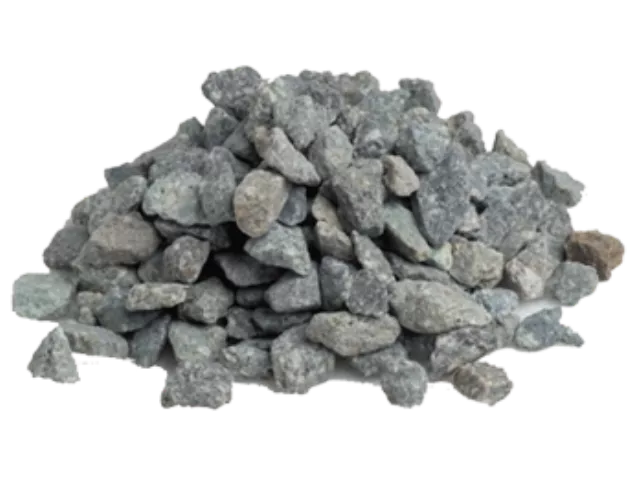
1 /
1
Pumice
-
Pumice is a mineral formed from volcanic lava eruptions over tens of millions of years, characterized by ear-like grains. It was historically known as "pumice" and is scientifically named "porphyritic andesite."
Pumice is a composite mineral or medicinal rock with certain biological activity. Its primary chemical composition consists of inorganic silicate-aluminates.
Including SiO2, Al2O3, Fe2O3, FeO, MgO, CaO, K2O, Na2O, TiO2, P2O5, MnO, it also contains all essential trace elements required by animals, such as K, Na, Ca, Mg, Cu, Mo, as well as rare earth elements, totaling about 58 different kinds.
Product Characteristics- It possesses functions such as adsorption, dissolution, regulation, biological activity, and mineralization. In aquaculture, pumice has been shown to increase production and revenue for pigs, chickens, and fish. Modern research indicates that pumice has various porous structures capable of adsorption. It can eliminate toxic substances in the intestines, has a certain adsorption and release capacity for bacteria, thereby reducing the extent of bacterial invasion. Pumice has been tested to contain fifty-eight essential trace elements and microelements beneficial to organisms, which can supplement the deficiency of minerals in feed. Importantly, many of these mineral elements are centers of activity within organisms, stimulating activity and enhancing catalytic effects. This improves animal metabolic functions, promotes the digestion and absorption of nutrients, strengthens disease resistance, and facilitates animal growth and development.
- It can adsorb free metal ions in water. After soaking in water, pumice can release essential elements beneficial to humans and organisms such as K, Ca, Mg, Si, Fe, Zn, Cu, Mo, Se, Mn, Sr, Ni, V, Li, Co, Cr, I, Ge, and Ti, as well as amino acids necessary for the human body from its aqueous solution.
- Strong adsorption capability: It can adsorb harmful substances such as E. coli, mercury, and cadmium in water, and can exchange lime in water.
- Mineral dissolution: Upon contact with water, essential minerals such as calcium, iron, silicic acid, magnesium, and aluminum that are indispensable to the human body dissolve immediately, making the water "activated" into so-called "living water."
- Deodorizing effect: Its strong adsorption capability can decompose unpleasant odors.
- Water quality adjustment: Most water quality tends to be acidic. Pumice has natural ion exchange capability, which can adjust acidic water quality to weak alkaline water.
-
Particle size: 1-3mm, 3-5mm, 5-7mm
Packaging: 20kg per bag
SiO2( Silicon dioxide ) 63.27%CaO( Calcium oxide ) 4.41%Na2O( Sodium oxide ) 3.88%Al2O3(Aluminum oxide ) 17.66%MgO( Magnesium oxide ) 2.68%K2O( Potassium oxide ) 1.81%Fe2O3( Iron oxide ) 3.93%TiO2( Titanium dioxide ) 0.32%Ig. Loss ( Ignition Loss ) 1.16%
-
Product Features IntrodutionPumice is a mineral formed from volcanic lava eruptions over tens of millions of years, characterized by ear-like grains. It was historically known as "pumice" and is scientifically named "porphyritic andesite."
Pumice is a composite mineral or medicinal rock with certain biological activity. Its primary chemical composition consists of inorganic silicate-aluminates.
Including SiO2, Al2O3, Fe2O3, FeO, MgO, CaO, K2O, Na2O, TiO2, P2O5, MnO, it also contains all essential trace elements required by animals, such as K, Na, Ca, Mg, Cu, Mo, as well as rare earth elements, totaling about 58 different kinds.
Product Characteristics- It possesses functions such as adsorption, dissolution, regulation, biological activity, and mineralization. In aquaculture, pumice has been shown to increase production and revenue for pigs, chickens, and fish. Modern research indicates that pumice has various porous structures capable of adsorption. It can eliminate toxic substances in the intestines, has a certain adsorption and release capacity for bacteria, thereby reducing the extent of bacterial invasion. Pumice has been tested to contain fifty-eight essential trace elements and microelements beneficial to organisms, which can supplement the deficiency of minerals in feed. Importantly, many of these mineral elements are centers of activity within organisms, stimulating activity and enhancing catalytic effects. This improves animal metabolic functions, promotes the digestion and absorption of nutrients, strengthens disease resistance, and facilitates animal growth and development.
- It can adsorb free metal ions in water. After soaking in water, pumice can release essential elements beneficial to humans and organisms such as K, Ca, Mg, Si, Fe, Zn, Cu, Mo, Se, Mn, Sr, Ni, V, Li, Co, Cr, I, Ge, and Ti, as well as amino acids necessary for the human body from its aqueous solution.
- Strong adsorption capability: It can adsorb harmful substances such as E. coli, mercury, and cadmium in water, and can exchange lime in water.
- Mineral dissolution: Upon contact with water, essential minerals such as calcium, iron, silicic acid, magnesium, and aluminum that are indispensable to the human body dissolve immediately, making the water "activated" into so-called "living water."
- Deodorizing effect: Its strong adsorption capability can decompose unpleasant odors.
- Water quality adjustment: Most water quality tends to be acidic. Pumice has natural ion exchange capability, which can adjust acidic water quality to weak alkaline water.
-
Specification SheetParticle size: 1-3mm, 3-5mm, 5-7mm
Packaging: 20kg per bag
SiO2( Silicon dioxide ) 63.27%CaO( Calcium oxide ) 4.41%Na2O( Sodium oxide ) 3.88%Al2O3(Aluminum oxide ) 17.66%MgO( Magnesium oxide ) 2.68%K2O( Potassium oxide ) 1.81%Fe2O3( Iron oxide ) 3.93%TiO2( Titanium dioxide ) 0.32%Ig. Loss ( Ignition Loss ) 1.16%

